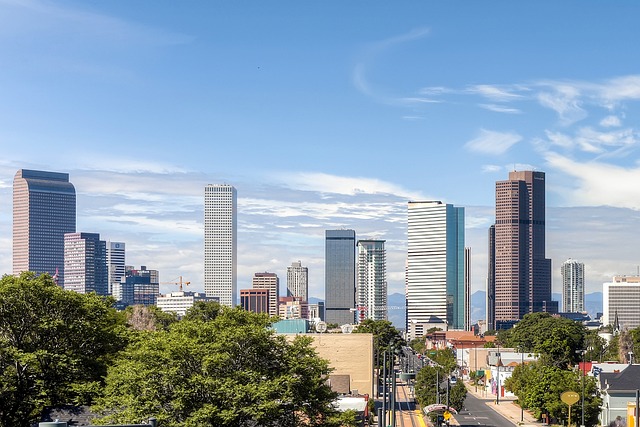Asbestos, once a popular construction material due to its strength and insulation properties, poses severe health risks if inhaled, including mesothelioma and lung cancer. Denver has strict EPA and OSHA regulations guiding Asbestos Removal Denver to protect residents and workers during renovation or abatement projects. Identifying asbestos in your property before asbestos removal Denver is crucial; it can be found in discolored or textured walls, floors, and ceilings. Professionals specializing in Asbestos Removal Denver conduct thorough inspections, test for presence, and provide safe removal options. Expert care is required due to asbestos's hazardous nature, involving encapsulation or physical disassembly with strict safety measures. Post-removal care includes regular cleaning, proper disposal, and long-term monitoring systems to ensure safety.
Asbestos removal in Denver is a critical topic due to the city’s historical building stock, which may contain this hazardous material. Understanding asbestos, its health risks, and navigating Denver’s regulatory framework are essential steps before initiating any removal process. This article guides you through identifying asbestos in your property, the safe removal process, and post-removal care, ensuring a clear path to a healthier environment. For effective asbestos removal Denver residents can trust experts to handle this delicate matter.
- Understanding Asbestos: Health Risks and Regulatory Framework in Denver
- Identifying Asbestos in Your Property: Signs and Common Locations
- The Process of Asbestos Removal: Safety Measures and Expert Intervention
- Post-Removal Care and Prevention: Ensuring a Safe Environment After Asbestos Clearance
Understanding Asbestos: Health Risks and Regulatory Framework in Denver

Asbestos, a group of minerals with exceptional strength and flexibility, has been widely used in construction materials for decades due to its insulation properties. However, over time, concerns regarding asbestos’ health risks have led to stringent regulations. In Denver, as in many places across the globe, understanding these risks is paramount when it comes to asbestos removal Denver services. Inhaling asbestos fibers can cause severe respiratory issues, including mesothelioma and lung cancer, with symptoms often not appearing until decades after initial exposure.
The regulatory framework in Denver aims to protect residents and workers from these dangers. The city adheres to guidelines established by the Environmental Protection Agency (EPA) and the Occupational Safety and Health Administration (OSHA), ensuring proper handling and disposal of asbestos during renovation or abatement projects. These regulations dictate specific protocols for identifying, containing, and removing asbestos materials safely, emphasizing the importance of professional asbestos removal Denver services for any property undergoing significant changes or renovations.
Identifying Asbestos in Your Property: Signs and Common Locations

Identifying asbestos in your property is a crucial step before considering asbestos removal in Denver. This insidious material can be hidden within various components of older buildings, often going unnoticed for years. Signs of asbestos exposure include discolored or textured walls, floors, and ceilings that may be friable—meaning the asbestos fibers can easily be crumbled or powdery when disturbed. Older homes, especially those constructed before 1980, are more likely to contain asbestos in insulation, roofing materials, floor tiles, and even some types of electrical wiring.
Common locations for asbestos include attic insulation, behind walls, under floors, in boiler rooms, and around pipes and electrical panels. If you suspect asbestos in your Denver property, it’s essential to consult with professionals specializing in asbestos removal. They can conduct thorough inspections, test for asbestos presence, and provide safe removal options tailored to your specific needs.
The Process of Asbestos Removal: Safety Measures and Expert Intervention

When it comes to asbestos removal in Denver, the process demands meticulous care and expert intervention due to the hazardous nature of this material. It involves a series of steps designed to ensure safe and comprehensive elimination. First, professionals conduct thorough inspections to identify asbestos-containing materials (ACMs) throughout the property. This is crucial as different building materials may have varying types of asbestos. Once ACMs are located, specialized equipment and techniques are employed for safe removal. Encapsulation, where ACMs are sealed off without destruction, or physical removal, involving careful disassembly and disposal, are common methods.
Safety measures are paramount throughout the process. Asbestos particles in the air can cause severe health issues, so professionals wear protective gear and follow strict protocols. This may include setting up containment areas, using negative pressure ventilation systems, and properly disposing of all contaminated materials according to local regulations. Hiring licensed asbestos removal companies in Denver ensures these tasks are handled by experts, minimizing risks and ensuring compliance with safety standards.
Post-Removal Care and Prevention: Ensuring a Safe Environment After Asbestos Clearance

After successful asbestos removal in Denver, proper post-removal care is crucial to ensure a safe and healthy environment for residents. This includes conducting thorough inspections to verify that all asbestos materials have been completely eliminated. It’s essential to maintain good air quality and adhere to strict safety protocols during and after the removal process to prevent any potential exposure.
Preventive measures such as regular cleaning, proper disposal of contaminated materials, and enforcing strict “no-entry” zones can help maintain a safe environment. Educating household members or employees about asbestos risks and ensuring they take necessary precautions is vital. Additionally, implementing long-term monitoring systems can provide early detection of any potential asbestos-related issues, ensuring peace of mind for all parties involved in the Denver asbestos removal process.
Asbestos removal in Denver is a critical process that requires professional expertise and strict adherence to safety guidelines. By understanding the health risks associated with asbestos and navigating the regulatory framework, property owners can ensure a safe environment. Identifying asbestos in your home or workplace is essential, as it may be hidden in various locations. Engaging specialized services for asbestos removal is crucial, as they employ advanced techniques and personal protective equipment (PPE) to mitigate risks. After successful removal, proper post-care and prevention measures must be taken to avoid future asbestos exposure, making Denver a safer place for all.
